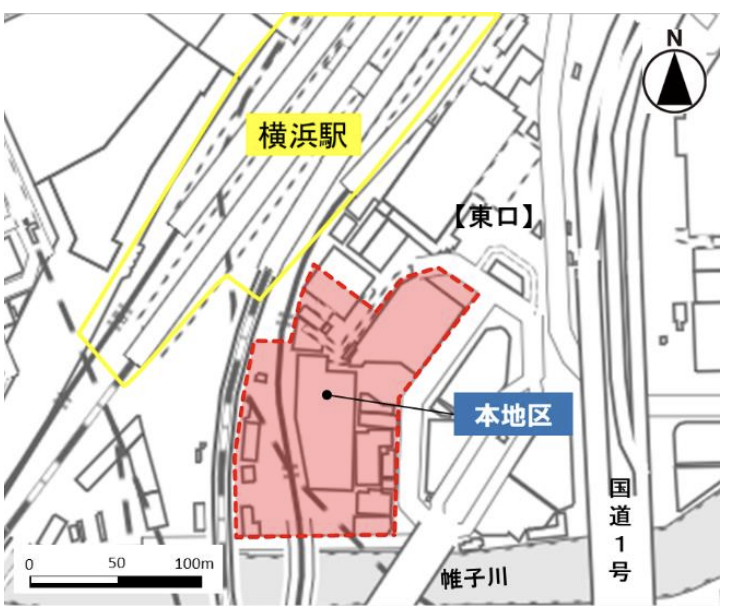A portfolio ( portfolio: the entire combination of several assets) is essential to successful investment management. Therefore, it is important to reduce risk by diversifying your investments (i.e., combining assets with different price movements). For example, even if the stock market declines significantly, the price of real estate and rental income will not immediately decline in the same way. Since real estate has different price movements than stocks and bonds, combining them increases the effectiveness of risk diversification ( risk sharing: using different price movements for each asset to reduce the overall risk of loss). Thus, by holding multiple asset classes in a balanced manner, even if some assets underperform, other assets can compensate and maintain the stability of the overall portfolio. When developing a portfolio strategy, it is also important to clarify investment objectives and acceptable risk ( tolerable risk: the amount of loss an investor can accept), and to consider the asset allocation that is right for you. For beginners, it is advisable to start investing within a reasonable range, combining safe and risky assets. For example, you can achieve a balance between stability and growth by investing a portion in stocks and real estate while using savings and bonds as a base. This will allow you to focus on long-term asset building without being swayed by short-term market fluctuations.
Various Real Estate Investment Types and Combination Strategies
There are various types of real estate investments, each with different risks (price fluctuation, vacancy risk, etc.) and return (profitability) characteristics. By building a real estate portfolio that combines different types of real estate, rather than just a single property, you can achieve more stable returns and diversification of risk. This section describes typical types of real estate investment, their characteristics, and strategies for combining them.
-
Tokyo Condominiums ( condominiums: investment in which you purchase and lease a single room in a condominium)
This is a method of investing in a studio or family condominium in an area with high demand, such as central Tokyo. The advantage is that vacancy risk is low and stable demand can be expected. In addition, since the purchase cost is lower than that of buying a whole building, it tends to be easier for beginners to start investing in condominiums. However, the disadvantage is that the yield ( yield: the ratio of annual income to the investment amount) tends to be lower due to the higher property price. In many cases, surface yields of 3-5% are common for properties in central Tokyo, and returns are modest in exchange for the stability of the asset value. -
Single-unitapartments (一棟アパートパートパート: an investment in which an entire building is purchased and leased)
This is a method of owning an entire building of apartments or condominiums. The advantage of owning several apartments at once is that even if one apartment becomes vacant, the rental income from the other apartments will make up for it. Although the large size of the property requires a large amount of capital to acquire, the flexibility of management (e.g., the ability to make collective decisions on rent setting and remodeling) is higher than with condominiums, and the overall yield is likely to be higher. For example, owning a single apartment building in the suburbs tends to generate higher rental income per purchase price than a condominium unit in the city center. Nevertheless, single-family investments also involve greater responsibility for managing the entire property, and repair and management costs must be taken into account. -
Regional Properties (Rural Properties: Investments in real estate located in non-metropolitan areas)
Properties in regional cities and suburban areas are often much cheaper to purchase than those in urban centers, and the surface yields tend to be higher. For example, there are some high-yielding projects with surface yields of 10-15% for apartments in rural areas. While high rental yields are attractive, they also increase the risk of vacancy due to a declining population and low demand, and there is a possibility that tenants may not be found. In addition, local properties are less liquid than urban properties, and it may be difficult to find buyers when you want to sell (i.e., it may be difficult to formulate an exit strategy). When investing in local properties, it is important to carefully assess the future potential of the area and rental demand. -
Commercial Properties (Commercial Properties: Investments in office buildings and stores for business use)
This is an investment in commercial real estate such as office buildings, stores, and warehouses. In some cases, higher rental income can be expected than for residential properties because the leased properties are leased to companies and stores, and the contract terms are more stable over the long term. In times of economic boom, high returns can be achieved through increases in tenant fees and property values. However, there is also an aspect of economic sensitivity (susceptibility to economic conditions), and in times of recession, there is a risk of tenants withdrawing or rents being reduced. It is also an area that requires expertise, and care must be taken in selecting and contracting properties. Since commercial properties often move differently from residential properties, they can be held in combination with residential properties to increase the diversification effect within a real estate portfolio.
Example of a combination strategy: When building a real estate portfolio, a well-balanced combination of properties with different characteristics such as those listed above is recommended. For example, if you combine "condominiums in central Tokyo" with "single-family apartments in regional areas," you can expect to receive stable rental income from the city center on the one hand, while increasing profitability through high yields from the regional properties on the other. While the city center property does not become vacant and brings in a stable income, the regional property boosts the overall yield. Thus, by creating a portfolio that combines stability andprofitability, you can improve the overall performance of your real estate investment. Furthermore, combining residential and commercial properties also improves resistance to economic fluctuations. During recessions, residential demand is relatively resilient and rental income is maintained, while during economic expansions, commercial properties can be expected to increase in rent and value, complementing each other during different phases of an economic expansion.
Tip: In addition to purchasing actual properties, there are also financial instruments such asREITs (Real Estate Investment Trusts) and real estate crowdfunding that allow investors to diversify their investments into multiple properties in small amounts. Investing in these products in combination with physical real estate is another diversification strategy. For example, even if you cannot buy a single building with your cash reserves, you can invest indirectly in office buildings through REITs, or you can invest small amounts in properties across Japan through crowdfunding. Beginners can build a more flexible and risk-diversified real estate portfolio by using these methods in addition to investing in physical properties.
Real Estate Investment vs. Other Investment Products
Real estate investment is an attractive asset management tool, but its advantages and disadvantages become clearer when compared and combined with other assets rather than as a stand-alone investment. In this section, we compare real estate investments with typical investment products such asstocks, bonds, and gold (gold), and summarize the characteristics (risk, return, liquidity, and inflation resistance) of each. The table below summarizes general trends for each asset class.
| Investment Product | Risk*1 (magnitude of price movement) | Return (expected level of return) | Liquidity (ease of redemption) | Inflation resistance (strength against inflation) |
|---|---|---|---|---|
| Equity (e.g., stock investment) | High (high price volatility) | High (price appreciation and dividends due to corporate growth) | High (can be bought and sold at any time in the market) | Moderate (corporate earnings easily adapt to price increases) |
| Bonds (e.g., government and corporate bonds) | Low (low price volatility) | Low (fixed interest income only) | High (tradable in the market, redeemable at maturity) | Low (real value decreases with inflation) |
| Gold | Medium (safe asset, but price fluctuates) | Medium (no significant interest income, mainly value preservation) | Medium (physical gold is a hassle, but gold ETFs are easy) | High (price tends to rise during emergencies and inflation) |
| Real estate (e.g. rental properties) | Moderate (price fluctuation is not so drastic) | Medium (steady income from rent + profit on sale) | Low (requires time and procedures to sell) | High (rent and asset value increase as prices rise) |
1 Risk refers to the magnitude of price fluctuation (volatility), and in general, the higher the risk, the greater the range of return.
The table shows that stocks are representative of high-risk, high-return investments. Although the stock market can fluctuate widely from day to day, over the long term, the value of assets is likely to increase in line with economic growth, making it an engine for aggressive asset growth. Bonds, on the other hand, are low-risk, low-return instruments that provide a stable income stream in the form of interest. Bonds serve as portfolio stabilizers because they do not fluctuate as much as stocks, and they offer the security of a return of principal if held to maturity (e.g., government bonds).
Gold is a special asset, known as a "safe haven" or "inflation hedge" (a means of protecting assets from a decline in the value of a currency due to inflation). Gold itself does not generate dividends or interest, so holding it alone does not generate income. However, during times of global unrest (war, financial crisis, etc.), demand for gold tends to rise as an asset escape, and its price tends to rise. Also, during inflationary phases, the relative value of gold is often reevaluated as the value of currencies decline. Gold therefore acts as an insurance policy to protect the overall value of the asset. However, it is not suited for the role of "greatly increasing assets" because its price often does not move significantly during normal times. In terms of liquidity, holding physical gold bullion requires time and cost to buy and sell, but in recent years, there are ways to invest in gold as financial instruments such as gold ETFs (Exchange Traded Funds) and pure gold savings accounts, and such instruments allow you to buy and sell in the market when necessary, ensuring ease of conversion to cash.
Real estate is generally positioned as a middle-risk, middle-return asset. Price fluctuations are not as severe as those of stocks, and it is unlikely to suddenly become like a piece of paper, but prices and returns are more volatile than those of bonds and deposits. In terms of returns, monthly income gains ( income gain: the regular income you receive from your holdings, e.g., rental income, stock gains, etc.) are more stable than those of bonds and deposits. The unique feature of real estate is that you can earn monthly income gains (e.g., rental income or stock dividends) while also aiming for capital g ains ( capital gain: a gain on the sale of an asset due to its appreciation in value) when the property is sold. However, it should be noted that real estate is illiquid and it takes time to sell it and convert it into cash. For example, stocks can be sold on the same day with a single click, but real estate can take several months to find a buyer, sign a contract, and settle the transaction. Also, because of the high initial investment and maintenance costs, careful financial planning is required when considering the percentage of real estate in a portfolio.
With regard to inflation resistance, real estate is a real asset and has excellent resistance to loss of value during times of inflation. When prices rise, land and building prices are likely to rise, and the relative value of existing properties will also increase as the cost of new construction rises. In addition, when renting a property, it may be possible to reflect inflation by revising the rent when renewing a lease or signing a new lease, which is an effective means of hedging against inflation (preventing a decline in asset value due to inflation). In fact, it has been pointed out that although the real value of cash and deposits decrease when inflation rises, the value of assets is more easily protected if they are held in real estate. However, real estate prices are not always linked to inflation and fluctuate according to economic trends and supply and demand, so overconfidence is not advised.
Role of Each Asset Class and Significance of Incorporating Real Estate Investment
Based on the above comparison, let us summarize the role that each asset class plays in a portfolio. For successful investment, it is important to understand the characteristics of these assets and combine them appropriately according to your objectives. In this context, incorporating real estate investments has its own significance.
-
Equities: These are the growth engines of your portfolio. They have the potential to significantly increase assets through economic growth and improved corporate performance. Although they are high-risk/high-return and subject to short-term volatility, long-term investments can be expected to increase assets in excess of inflation. Equities play a role in increasing future assets and tend to be allocated large percentages in younger and more asset growth oriented phases.
-
Bonds: are a portfolio stabilizer and representative of safe assets. They provide regular interest income and low price volatility, which helps to limit the erosion of the value of your assets. Bond prices often rise (or fall by a smaller margin) even when stock markets are volatile, providing a cushion. Bonds are primarily included for asset preservation and stable income, and are emphasized by near-retirees and safety-oriented portfolios.
-
Gold: Gold serves as portfolio insurance anda means of preserving value. Gold itself does not generate income and is not suitable for asset appreciation, but it has a low correlation to stocks and bonds and can reduce overall risk by serving as a contingency shelter. For example, when other assets fall in value due to war or a major financial crisis, the price of gold may rise to compensate for some of the losses. Gold can also serve as an asset that maintains purchasing power when inflation lowers the value of a currency, contributing to the long-term preservation of the value of your wealth. However, holding too much gold only weakens the ability to grow assets, so a balanced allocation with other assets is important.
-
Real Estate: A balancer that provides the security of real assets and stable income to a portfolio. It plays a dual role of increasing and protecting assets over the medium to long term by providing a regular source of income (rental income) and capital gains (gains on sales). In particular, rental real estate generates a monthly cash flow similar to that of stock dividends, but while stock dividends are influenced by corporate performance, rental income has the advantage of being relatively predictable as long as local demand is stable. In addition, real estate is reliable in that it provides psychological security due to its physical existence, and there is no risk of bankruptcy even if held for a long period of time. The significance of including real estate in a portfolio is straightforward: it adds unparalleled stability and inflation resistance, and improves the overall risk-return balance. Even when stocks and bonds fluctuate widely, real estate values and rental income are less likely to change rapidly, which can be expected to reduce the overall volatility of assets. Furthermore, as mentioned above, real estate has a relative advantage during periods of inflation, so it can function as a hedge against inflation risk, which cash and bonds alone may not be able to handle.
As described above, each investment product has a different role to play. By understanding the characteristics and roles of these products, even beginners will find it easier to consider the asset allocation that best suits their objectives. For example, if you want to "increase assets over the long term but avoid large losses," it is effective to build a portfolio with increased stability by mixing not only stocks but also bonds and real estate. On the other hand, if you are of the younger generation and "want to grow your assets significantly while tolerating some risk," a strategy of increasing the proportion of stocks while holding a certain percentage of real estate and gold to prepare for downturns can be considered.
Conclusion
The "combination strategy" in real estate investment is a powerful method for beginners to pursue profitability while minimizing risk. By combining various types of real estate, such as urban condominiums, single-family apartments, regional properties, and commercial properties, you can build a portfolio that makes the most of each property's strengths and compensates for its weaknesses. This will diversify risk and improve profitability within the real estate investment. Furthermore, if you diversify your investments by incorporating not only real estate but also other assets such as stocks, bonds, and gold, your overall portfolio will be more stable, and you will be able to build assets that are resilient to changes in the economic environment.
Finally, the key is to find the right balance for you. There is no absolute right answer to the ideal asset allocation, and it is important to be flexible and review it according to your life stage and economic situation. If you are a beginner investor, start small and diversified, and gradually adjust your portfolio as you gain experience. Referring to the combination strategies explained in this article, try to build stable assets while controlling risks well by utilizing multiple investment products within a reasonable range. As a solid step toward the future, we encourage you to try balanced portfolio management including real estate investment.

Daisuke Inazawa
Representative Director of INA&Associates Inc. Based in Osaka, Tokyo, and Kanagawa, he is engaged in real estate sales, leasing, and management. He provides services based on his extensive experience in the real estate industry. Based on the philosophy that “human resources are a company's most important asset,” he places great importance on human resource development. He continues to take on the challenge of creating sustainable corporate value.

.png)













